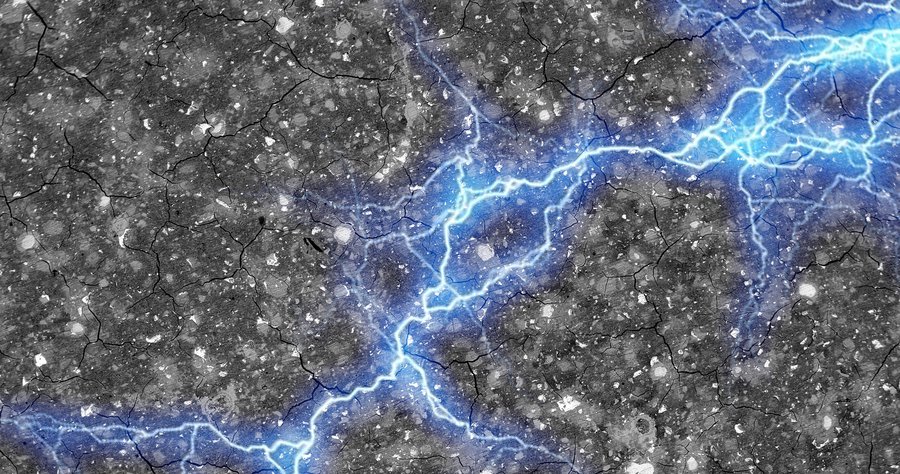Plan to commercialize supercapacitors in the next few years
A solution that is inexpensive, scales, is not inconvenient, and fits household demands? What’s the catch?
I hope it’s as good as it sounds and becomes a thing.
One of the big catches is how Greenhouse gas intensive concrete production is
I think the idea here is to bake it into construction that would happen anyway. If you just need energy storage, keep using batteries. But if you’re pouring a foundation already, why not also turn that foundation into a battery?
concrete seems to be used here for its structural properties, just like we do it today. Their solution doesn’t seem to require it:
If more powerful capacitors are required, they can be made with a larger concentration of carbon black, at the expense of some structural strength. This could be useful for applications where the concrete is not playing a structural role or where the full strength potential of concrete is not required. For applications such as a foundation, or structural elements of the base of a wind turbine, the “sweet spot” is around 10 percent carbon black in the mix, the team says.
And how greenhouse gas intensive is carbon black production?
If you’re releasing CO2 you’re losing carbon.
If you make it with electricity it’s effectively a carbon sink.
If it’s just a byproduct of other industries, like existing coal power plants, it might be seen as carbon neutral. And lithium batteries also use it.
Carbon black is produced bij burning a hydrocarbon with a limited amount of air. It’s not a byproduct, but uses organic materials. This can be of renewable sources like vegetable oil, but it is made a lot from the heavy fractions in fossil oil.
I mean, there’s a reason why we’ve taken so long with even electric cars lol I hope this becomes a reality, but moneyed interests will fight tooth and nail.
Edit: Also, they sold the idea of electric cars to us so we wouldn’t question a lack of infrastructure investment in railways which we so desperately need.
Yeah they’ll scoop up the technology patents and then slowly utilize it if and when it works in their favor to maximize their profits
The team worked out that a 45 cubic meter material block of nanocarbon-black-doped concrete would have enough capacity to store about 10kWh
10kWh is enough to run a house for a day, how much concrete would be in a house with concrete walls?
I mean, its not clear you want to build a house out of concrete walls that aren’t entirely, well, concrete. Even so, its a neat idea, but coming out of the MIT press mill, I’ll not be holding my breath for it to become real. MIT is basically a meme at this point with regards to press releases that don’t manifest into reality.
naturally it depends on the walls and house layout, but just to have an idea: assuming a concrete thickness of 20cm and 4 external walls of 20m x 3m each:
0.2 * 4 * 20 * 3 = 48m^3
probably in the 100-200m^3 ballpark if we count internal walls, which are thinner, but cover more total length.
And I know walls are usually not pure concrete, but functions like energy storage could very well change how we build them.
For a basement with a 5-inch slab and exterior walls are 8 inches, 8ft high and also concrete… Then 45 cubic meters is about what you’d need.
Of course, your basement walls are about as electrically grounded as it gets, so I doubt you’d be able to store power in them. One leak and you’re discharging all that power into the groundwater.
So, feasible amount. Just needs isolating and could replace expensive batteries for solar?
I wonder if the foundation of the house would be convenient for this… that much concrete is equivalent to a cube of side length around 10 feet, which seems to at least be in the ballpark for the total amount of concrete in a foundation. I think?
10kWh is enough to run one 110VAC outlet at full capacity for about 10 hours. I don’t know where that 10kWh figure comes from but most American houses use between 15-30kWh per day.
So that 10 foot cube would need to be closer to 15ft cubed. It’s huge. Perhaps the foundation of the structure would work, as someone else mentioned.
UK average is 8 kWh / 24 hours for electricity per household of 2.4 people.
One catch is that carbon black is mostly made from fossil oil.
It’s more nuanced than that. The question is whether we’re just using carbon black that’s already an excess byproduct of other industries, or we’d be actively producing it to make these wall batteries.
That’s only because that’s where we have an access currently. You can make carbon black by burning a whole lot of different things. Pretty much anything carbon-based. You don’t make carbon black specifically, you harvest carbon black from other processes and refine it if needed.
The catch is, if it works some oil company is gonna buy it out and kill it.
The last time this news was posted everyone tore into it. I don’t remember the details, but it was funny.
It’s just not feasible in reality.
Blocks of cement infused with a form of carbon similar to soot could store enough energy to power whole households. A single 3.5-meter block could hold 10kWh of energy, and power a house for a day, and the technology could be commercialized in a matter of years, the scientists say.
This kind of shit comes out of MIT daily and never manifests into reality. They’ve got a great PR team.
Just try this as an exercise. Keep a journal of how many world changing batteries are presented by the MIT PR department from today, through one year. Three years later, open the journal and see how many have found any meaningful application in the real world.
You gave a link to the MIT PR department. Like, yeah, that’s my point. They are phenomenal at tooting their own horn. But the conversion rate to there actually being a there there is extremely low.
Oh I see! Fair enough.
Hope this works out. It would be amazing to see new construction using this in foundations. Built in energy storage.
We have already solved this problem, and concrete blocks is not the way to do it.
Water can do the exact same thing, but it flows through pipes and can be moved by pumps, it doesnt “break”, it doesnt require complex moving mechanisms, and it can actually 100% fill a given volume (blocks cannot)
We already do this, right now.
This is the whole “they are trying to re-invent trains again” thing.
Did you read the article? This isn’t gravity storage, they’re making big capacitors by taking advantage of the way carbon black spreads into closely-spaced pockets when added to cement. It would be part of an electrical circuit.
I’m not saying it’s a good idea; I’m not an electrical engineer, so I can’t really assess the benefits and risks. But I don’t think it’s the thing you’re complaining about.
Isn’t it good to have other methods. There will be places where water is impractical.
It’s concrete, not cement. Cement is a component, not the end product.
If you leave a bag of portland cement outside and let the rain cures it then that’s a cement block.
And the article mentions both but in contradicting contexts. Is “cement blocks” actually “concrete blocks”? Then later it mentions cement being incorporated into the resulting concrete, so what was the previously mentioned “cement blocks”? Nothing made of cement in the shape of blocks are ever incorporated into concrete. Cement powder is.
Anyway, cool concept. In the mean time, the world also needs to figure out how to make concrete more green, because manufacturing cement releases a lot of greenhouse gases.
Direct link to paper: https://www.pnas.org/doi/10.1073/pnas.2304318120
Not my field but takeaways from a quick glace are that they note that the more energy dense they make it the worse it is at being concrete, and that their 10kwh number needs 45m³ of concrete. That would be 15x15x0.2m or like 55ftx55ftx8in which isn’t crazy but it’s a pretty decent amount.
not at all defending or praising the idea, but I’m very sure the foundation of my house is larger than that.
I thought this was going to be the thing where they use cheap power to raise big weights and then generate power from gravity lowering them.
In general those are a bad idea. A lot of complexity for not much power storage.
Presurized caverns or pumped storage are much better version of that idea.
The team worked out that a 45 cubic meter material block of nanocarbon-black-doped concrete would have enough capacity to store about 10kWh of energy, which is reckoned to be the average daily electricity usage for a household, so remote off-grid houses with batteries in the foundations could operate using windmills or solar panels.
That’s ~1600ft^3 for those of us unfortunate enough to have an innate sense of freedom units and not logical units; a lot of concrete!
I’m very curious about the longevity and durability of these bricks, and safety considerations. Such a house could potentially, (pun intended,) instantly discharge a lot of electricity into someone who comes in to contact with its foundation. Don’t use that masonry drill, it might kill you!
Or alternatively, can it even discharge fast enough to provide a meaningful enough amount of electricity?
What does the charge/ discharge cycle do to the integrity of the concrete?
What special conditions are necessary for is curing? Whats the yield? Because the consequences of having a 45 cubic meter block of concrete that was supposed to be a battery sitting in my yard but isn’t are not trivial.
Whats the carbon footprint of adding 45 additional cubic meters of concrete to every structure? It takes a shit ton of energy to rip off the necessary electrons from lime stone to make lime.
They’re saying it coule be part of the foundation.
Basically for the average American house I think that would just be a slightly thicker foundation (if it could work like that)
Technology Connections over here like: IT’S CALLED A WATER HEATER!
I adore his mid-western pragmatism.
The team worked out that a 45 cubic meter material block of nanocarbon-black-doped concrete would have enough capacity to store about 10kWh of energy
Try to visualise 45 cubic meters for the energy storage for 1 person for 1 day without any heating/cooling
3x3x5 is like a storage unit for a family
Okay and now I need eleven of these, our house of 4 uses 110kwh per day
Per day?!
Wow. Our house of two adults and two kids use 27kwh per day…
Yeah it’s cold so the heat pump air conditioning takes about 80kwh each day to heat the house to 17-18C
Classic Australian winter
This is really exciting if it works out and gets commercialised widely! One thing I’m not sure I understand is whether this requires entirely new cement, or if somehow the carbon black and capacitors can be mixed into existing cement structures (especially roads)? As mentioned in the article, cement is a high emission product and we already have so much of it in the world.
It would require adding carbon black in the correct proportions during initial mixing, so new concrete only. The structure that functions like a supercap is formed during curing.
A single 3.5-meter block could hold 10kWh of energy, and power a house for a day
That’s… not a lot of energy; can use it up doing like 2 loads of laundry if you have an electric dryer, or running a central A/C for a few hours. (let alone charging an EV, where you can burn through it in a bit over an hour to add maybe 15% or so)
I’d put my estimates on the size battery you need for a residential structure at around 50kwh.
Tesla Powerwall is 13.5, but that’s mostly intended to store excess solar energy, not as a full backup power source.
I have two power walls. I wish I had 4-8.
4 would keep me powered most every day and night, with just my panels (8kwh max supply). If I had in the range of 8 power walls, I could completely disconnect from grid supply and I would effectively never run have to concern myself in everything but the most extreme of weather circumstances. My local supplier has basically garbage policies around me giving back to the grid, and I have to pay a ridiculous connection fee.
I’ve got a friend who has convinced me to let him take apart my gen 1 leaf for the battery, which should give me an additional 24 ish kwh storage. I produce plenty of electricity during the day. I just need places to put it.
I’ve only done solar + battery setups on RVs and found 8kWh to be the probably the minimum if you have to run the AC at 100% duty cycle. Realistically at night that probably won’t happen but I haven’t had a chance to test the current one where I’ll actually he doing that with a kill-a-watt to get a real world number.














